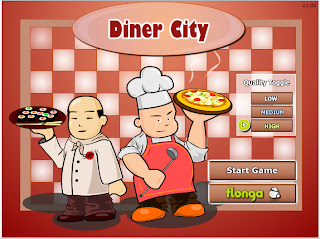Four Market Structures |
| Perfect Competition | Monopolistic Competition | Oligopoly | Monopoly |
| Number of Firms | Very Many | Many / Several | Few | One |
| Freedom of Entry | Unrestricted | Unrestricted | Restricted | Restricted or Completely Blocked |
| Nature of Product | Homogeneous | Differentiated | Undifferentiated or Differentiated | Unique |
| Implications of Demand Curve | Horizontal: Firm is a price taker | Downward Sloping but Relatively Elastic | Downward Sloping. Kinked Shape. Relatively Inelastic. (Shape depends on rivals reactions) | Downward Sloping More Inelastic Than Oligopoly. Firm Has Considerable Control Over Price. |
| Average Size of Firms | Small and Large (Economies of scale will encourage growth) | Small and Large | Large | Small or Large |
| Possible Consumer Demand | Elastic | Elastic, Firms face Individual Demand curves | Consumer demands factors include advertising and pricing from rival firms | Consumers are limited to one choice |
| Profit Making Possibility | Normal Profits | Normal Profits | Normal and Economic Profit(Depends on reactions of price setting by rivals) | Economies of Scale. Normal and Economic Profits in short and Long Run |
| Government Intervention | Price Floors and Ceilings | Government May Limit Entry | Highly Unregulated Resulting in Cartels | Anti-Monopoly Legislation. Profits Taxes. Sales Taxes. Price Setting. Nationalization |
| Efficiency | Productively (P=Min AC) and Allocatively Efficient (P= MC) | Productively and Allocatively Inefficient | Productively and Allocatively Inefficient. Technological Development May Push Costs Down | Productively and Allocatively Inefficient |
| Examples | Corn, Onions, Broccoli | Gas Stations, Convenience Stores, Night Clubs | Cable, Phone and Internet Providers | Public Transit, Utilities |
Perfect Competition Graph Example figure 9.2A This is representation is of a typical firm in a Perfectly Competetive Market. Price is set where Marginal Costs(MC) intersect the perfectly elastic demand line which is also the Average Revenue(AR) and Marginal Revenue(MR). Average Profit(AP) is the difference between Average Costs(AC) and Price(P1). Average Profit times Quantity(Q1) is the Total Profit :
 |
| Figure 9.2A |
Monopolistically Competitive Graph Example Figure 9.2B. This repesentation of a typical Monopolistically Competitve firm has a elastic demand line(D1). Total Revenue is Price(P1) times Quantity(Q1). Total Reveue minus Total Costs(Q1 times C1) will give Economic Profit amount. Price is set where Marginal Revenue(MR) intersects Marginal Costs :
 |
| Figure 9.2B |
Oligopoly Graph Example Figure 9.2C The following is example of a typical firm in a Oligopoly Market. The Kink in the demand curve has both Elastic and Inelastic sections. The profit maximizing output is (Q1). Price and Quantity equilibrium will remain the same even if Marginal Costs increase as shown in the difference between (MC1) and (MC2):
 |
| Figure 9.2C |
Monopoly Graph Example Figure 9.2D. The average firm of in a Monopoly represented by the following figure. the Demand Line is the same as Average Revenue, the break even points are where Average Revenue(AR) intersects Average Costs(AC) The profit maximizing price is where Marginal Revenue (MR) and Marginal Costs (MC) intersect and correspond with the quantity price of the Average Revenue line(AR):
 |
| Figure 9.2D |






